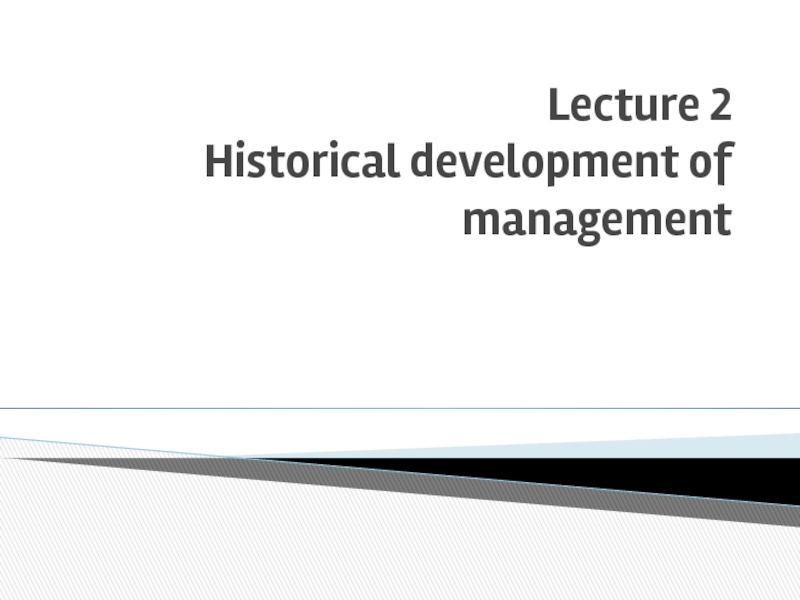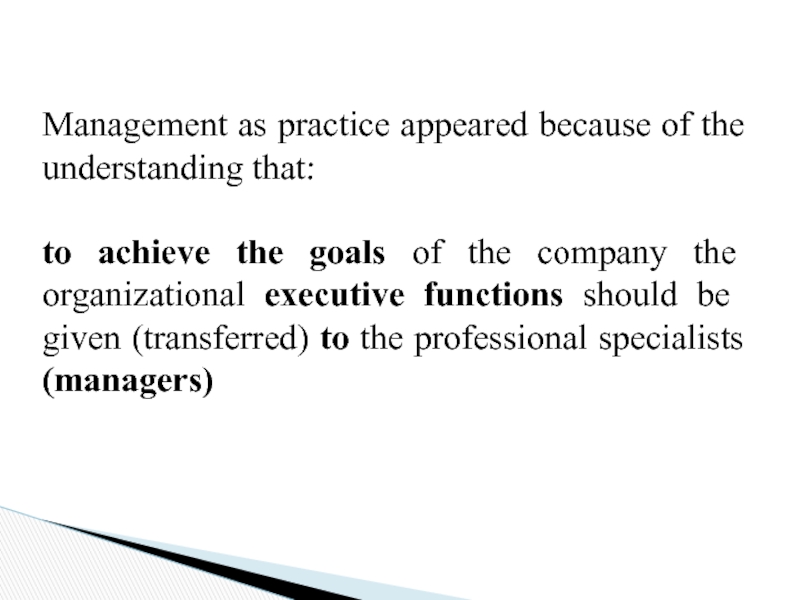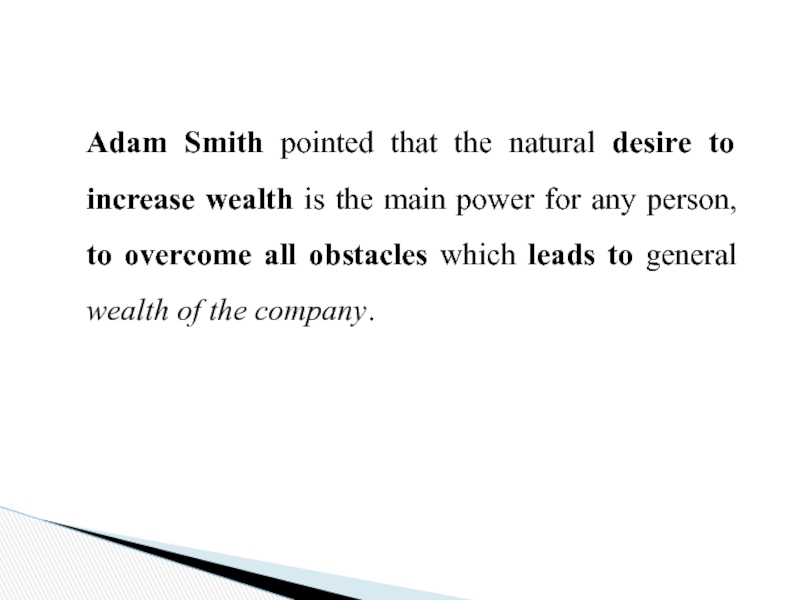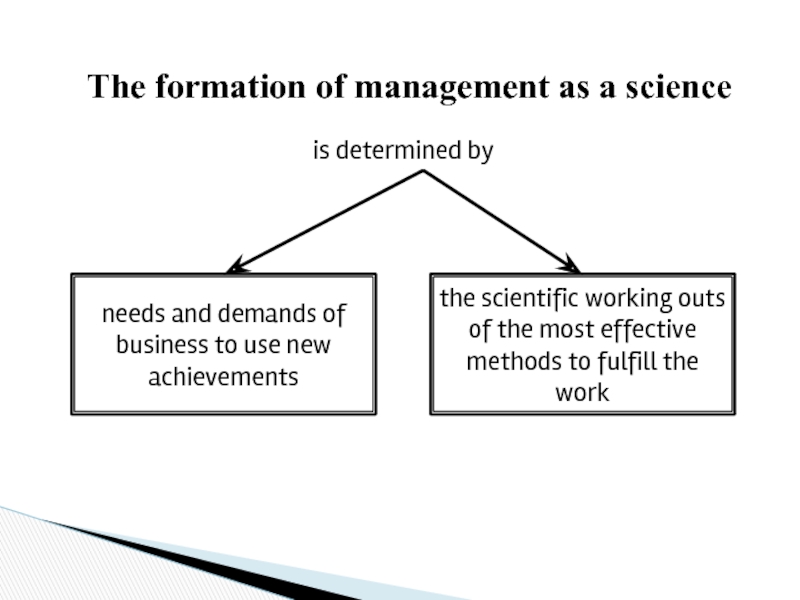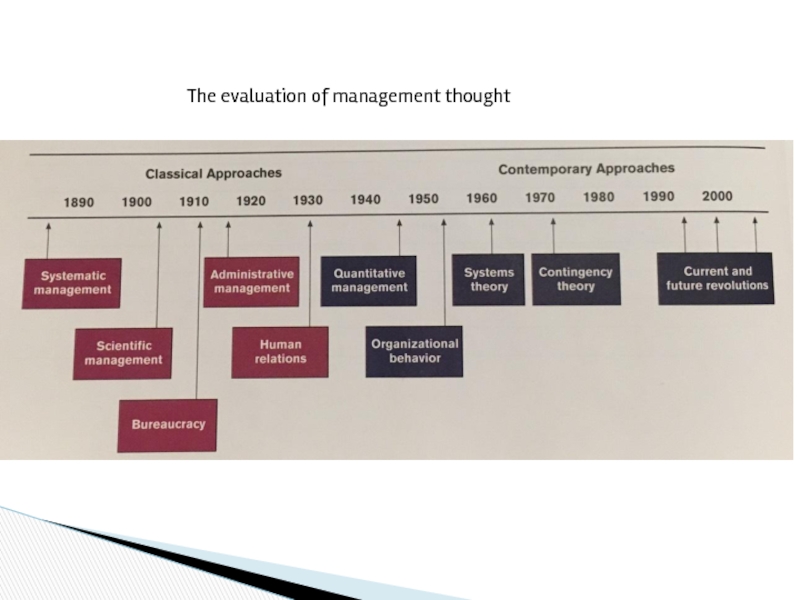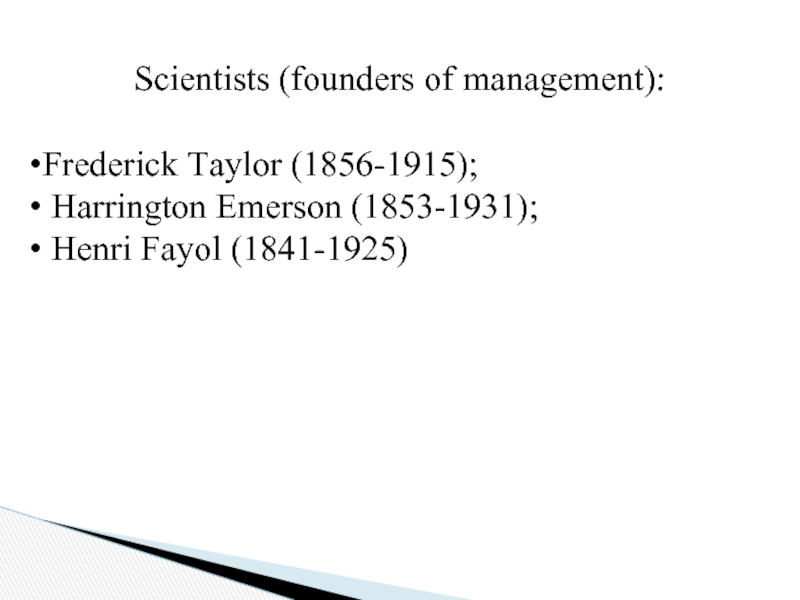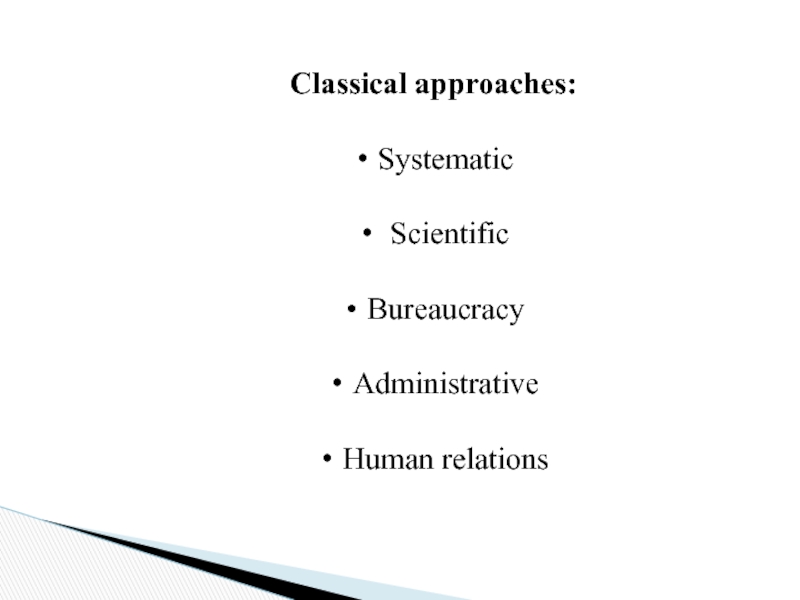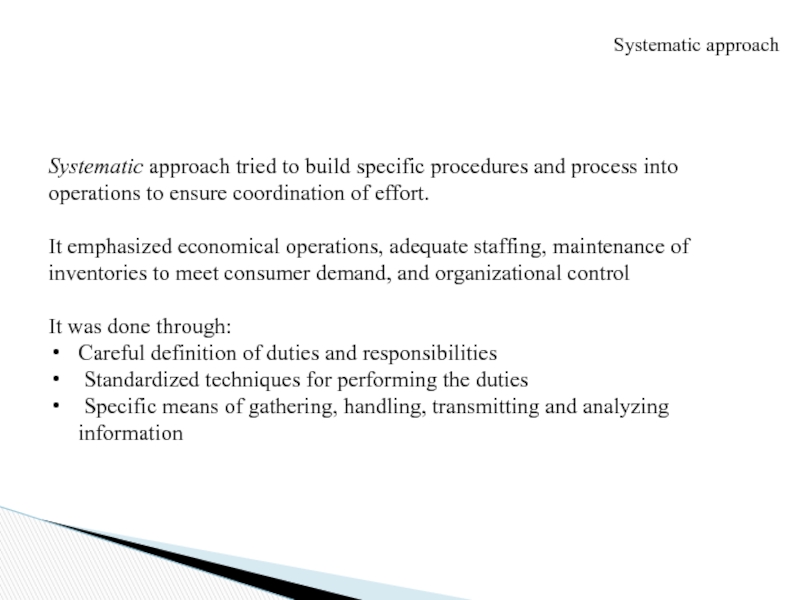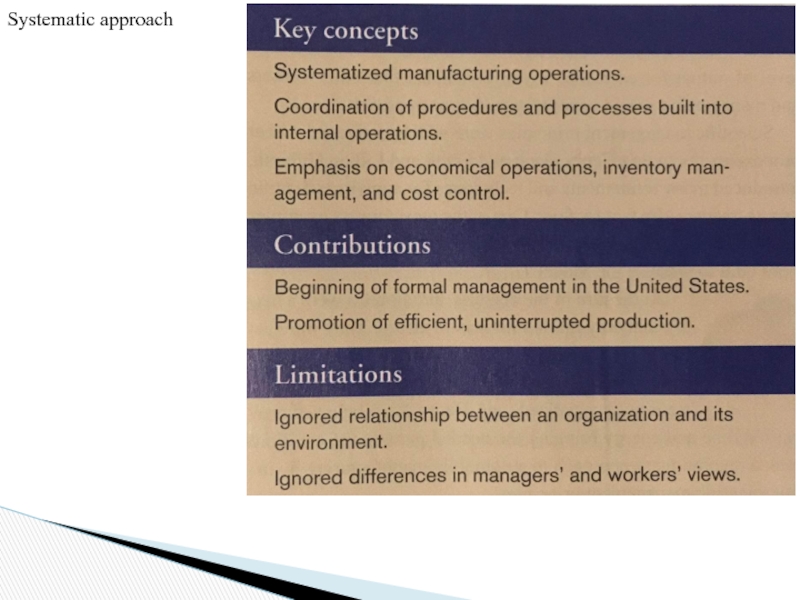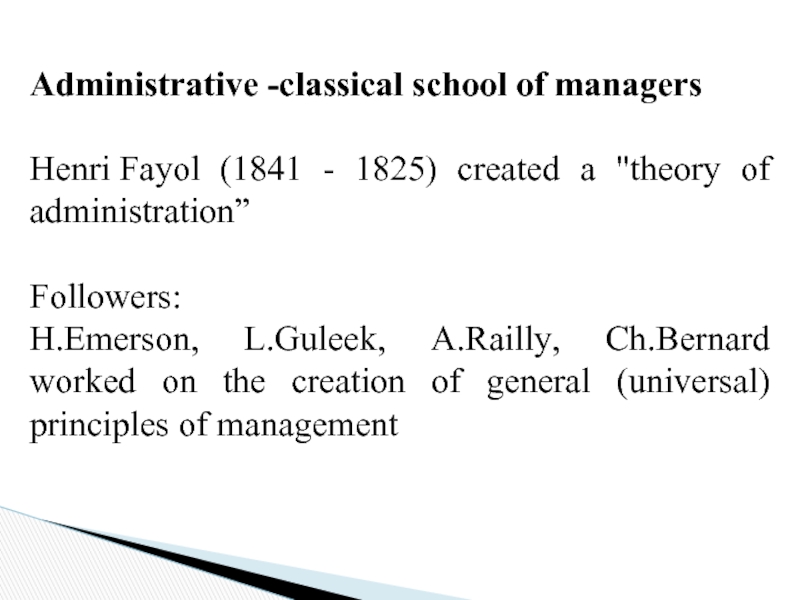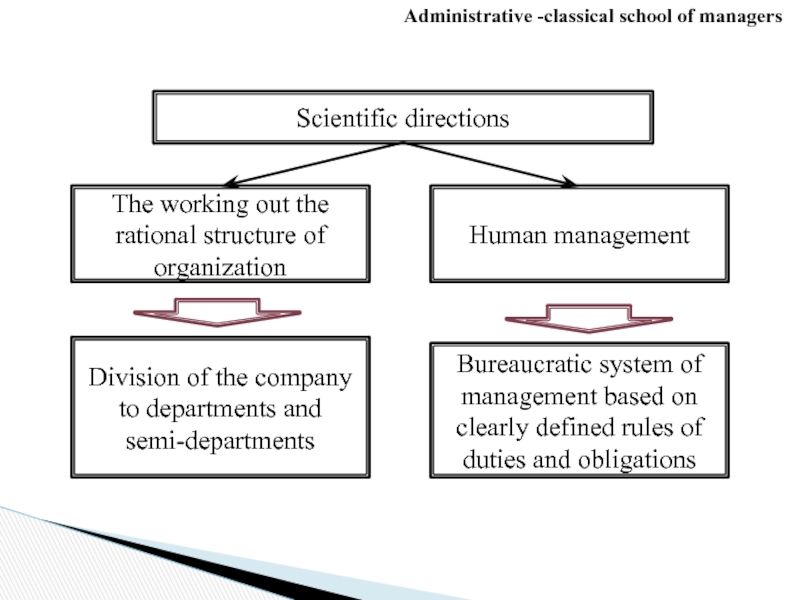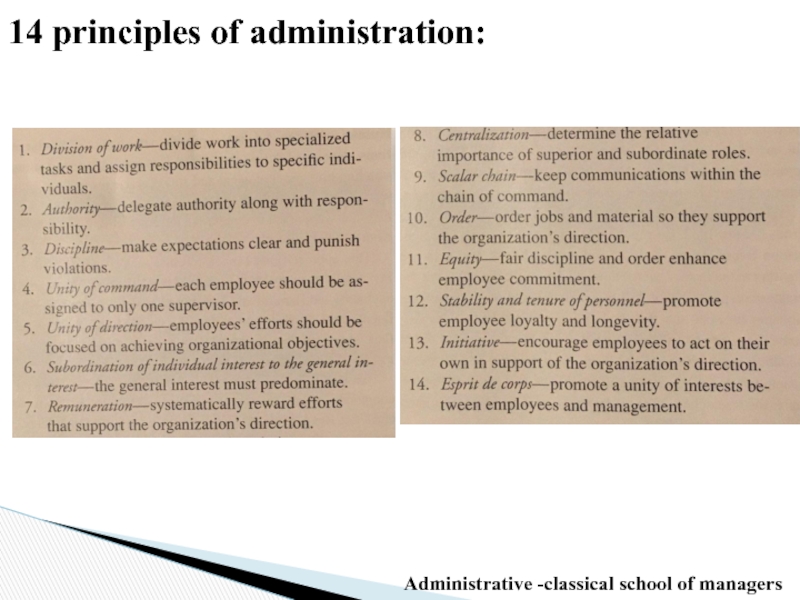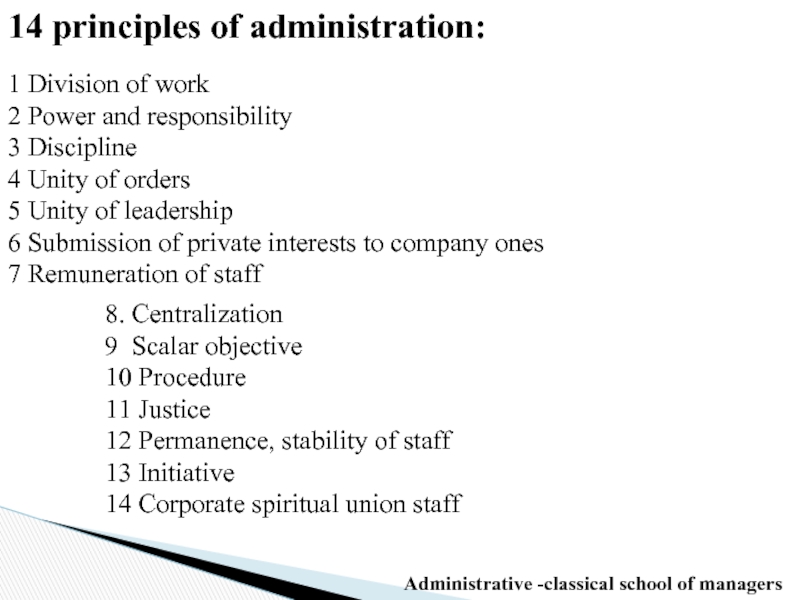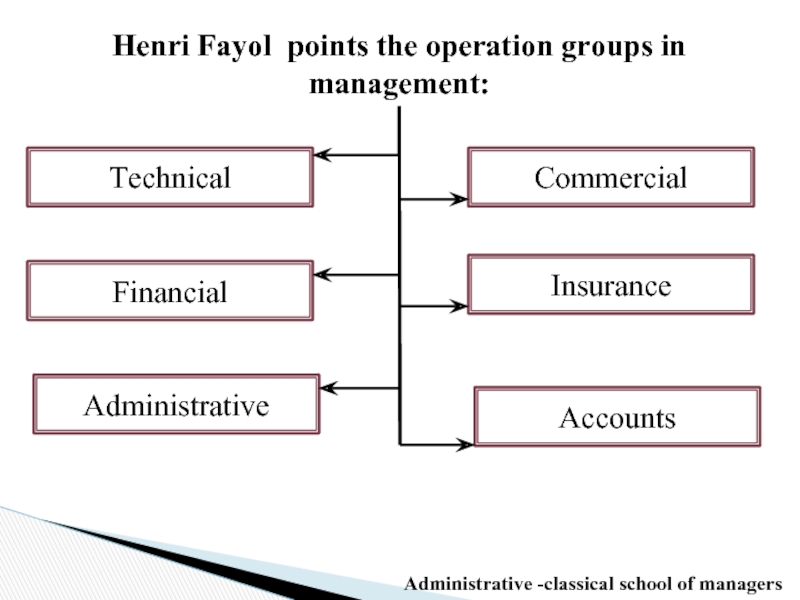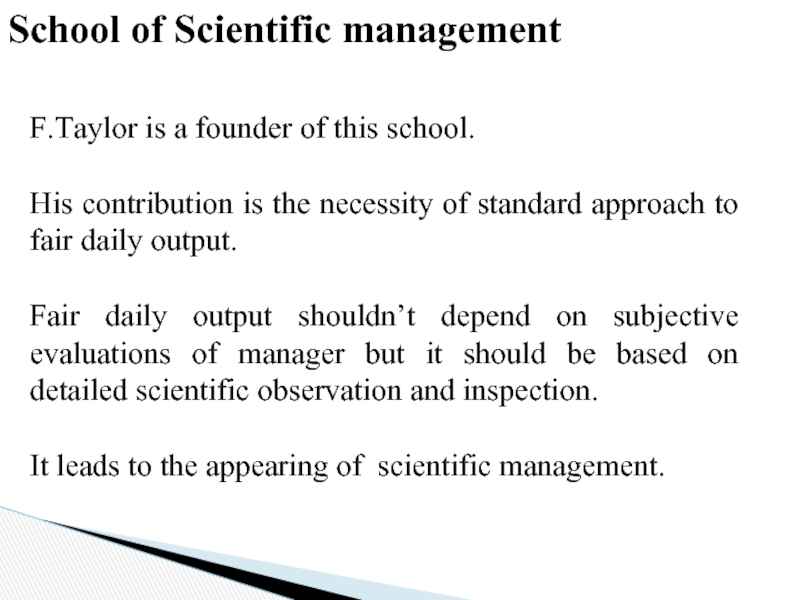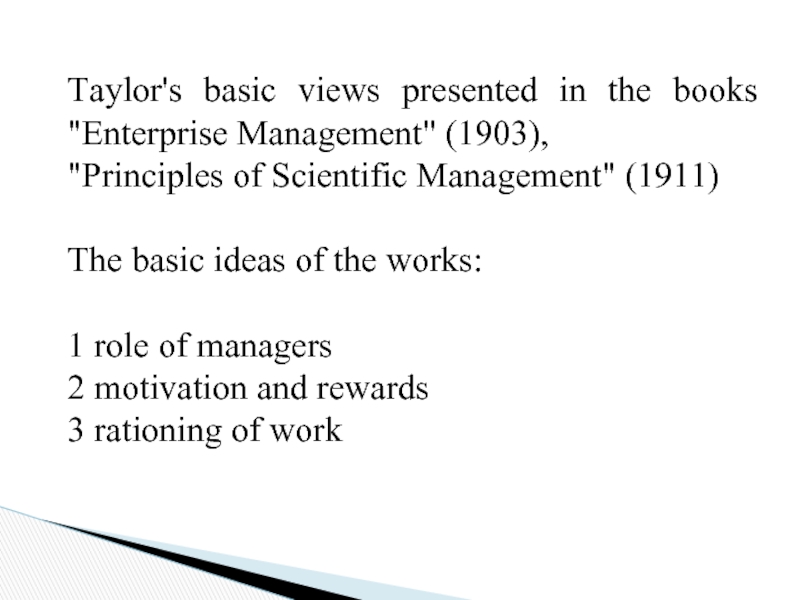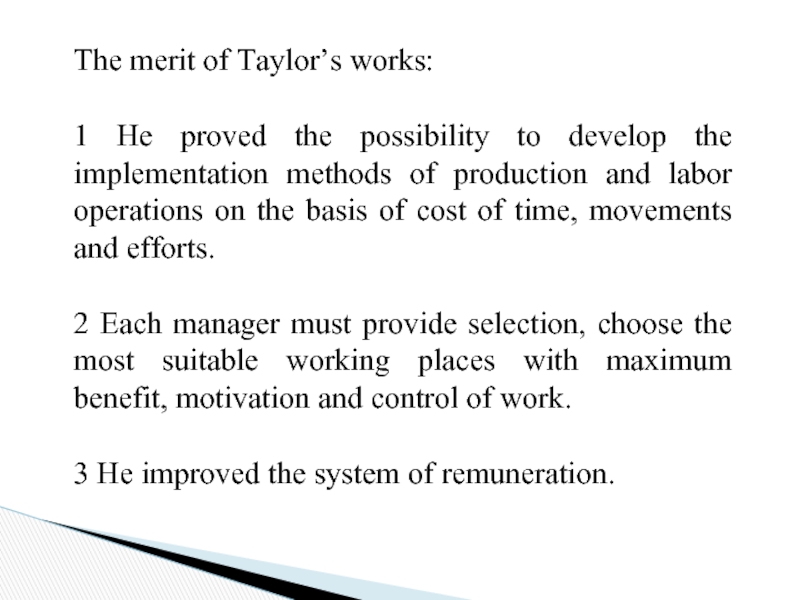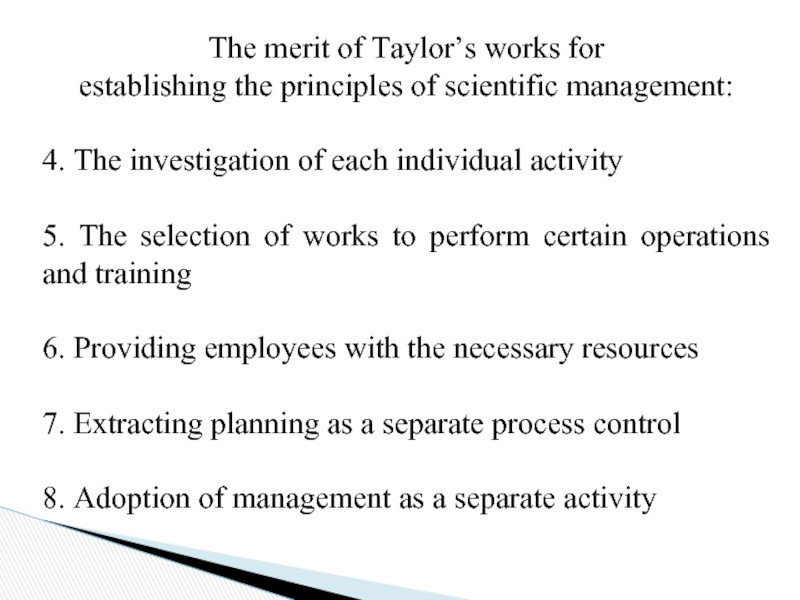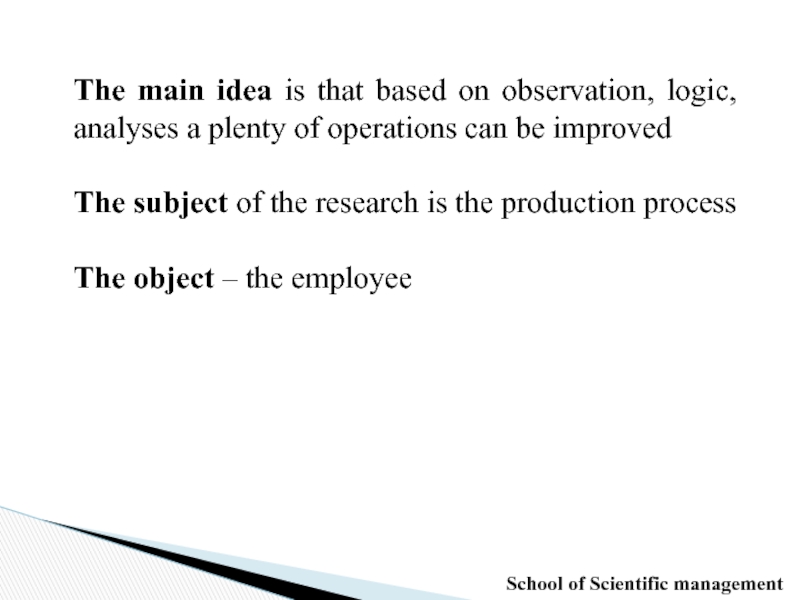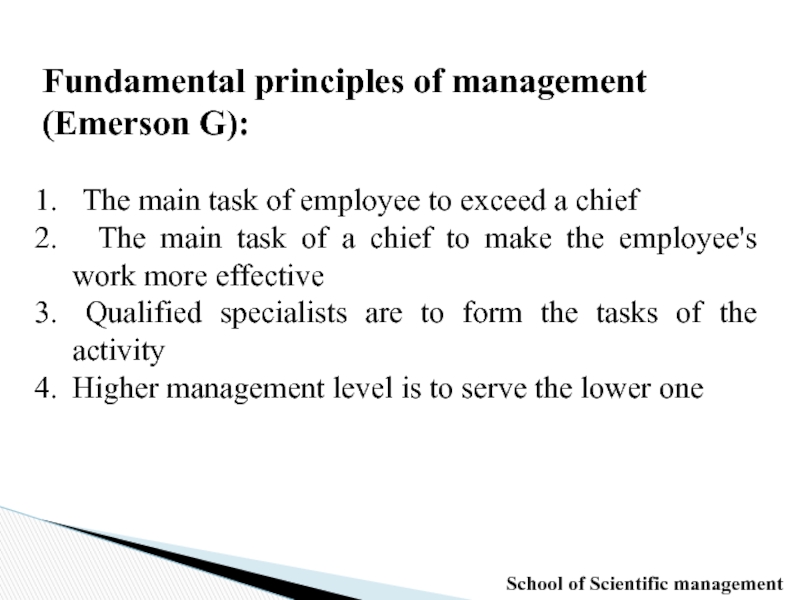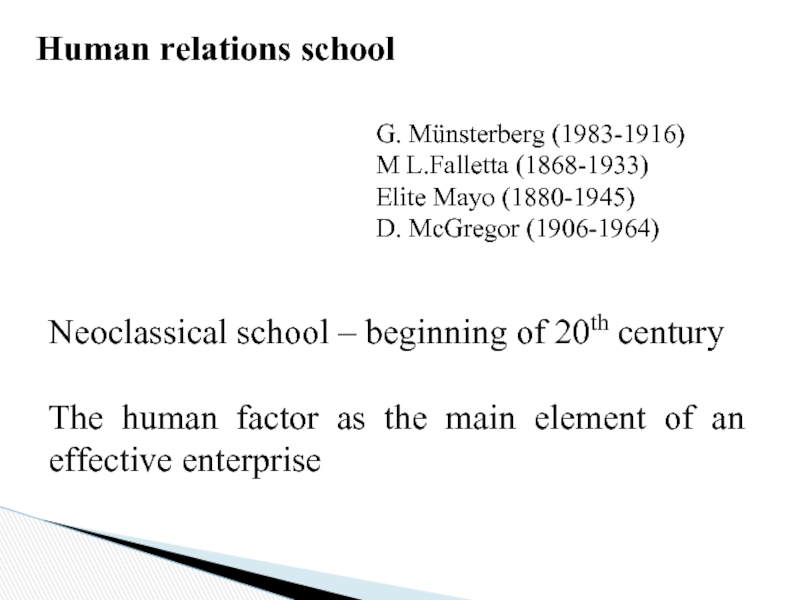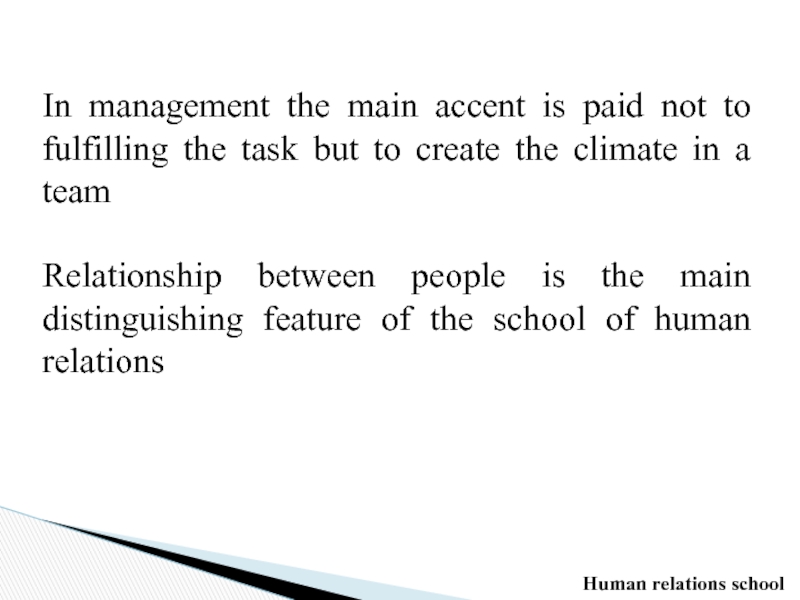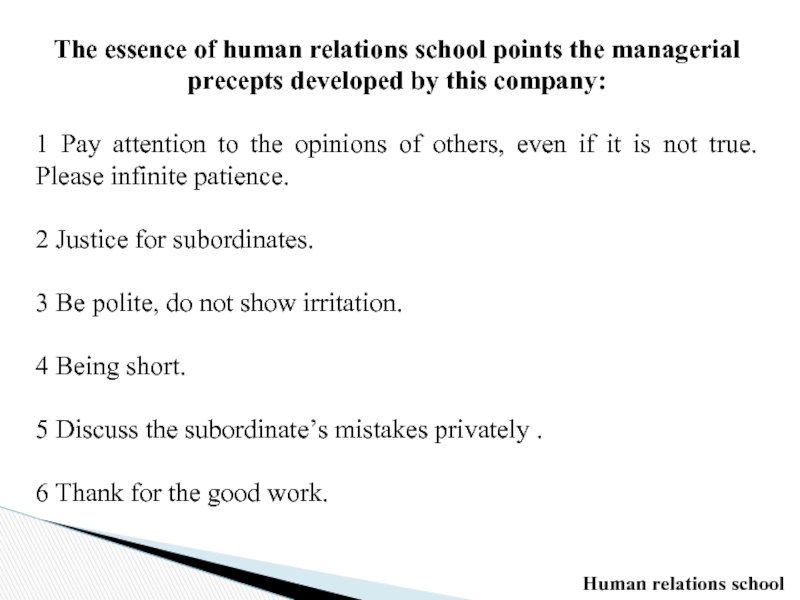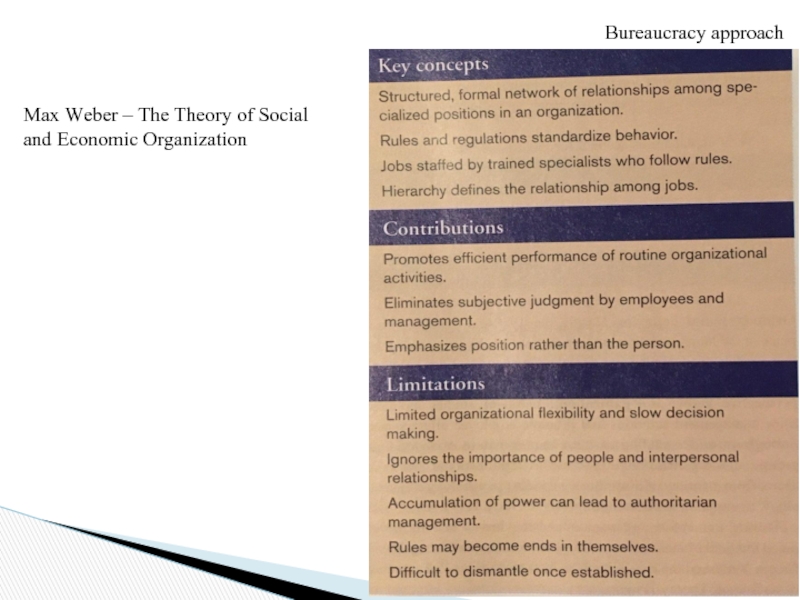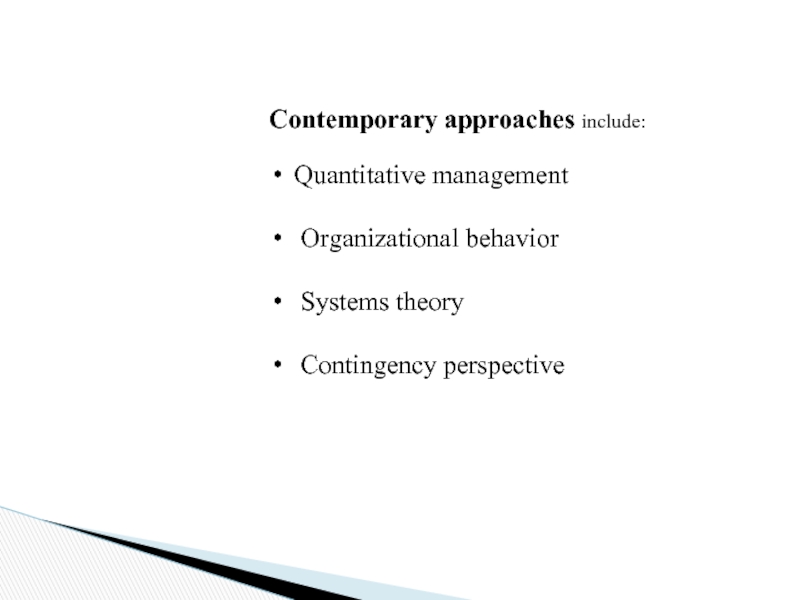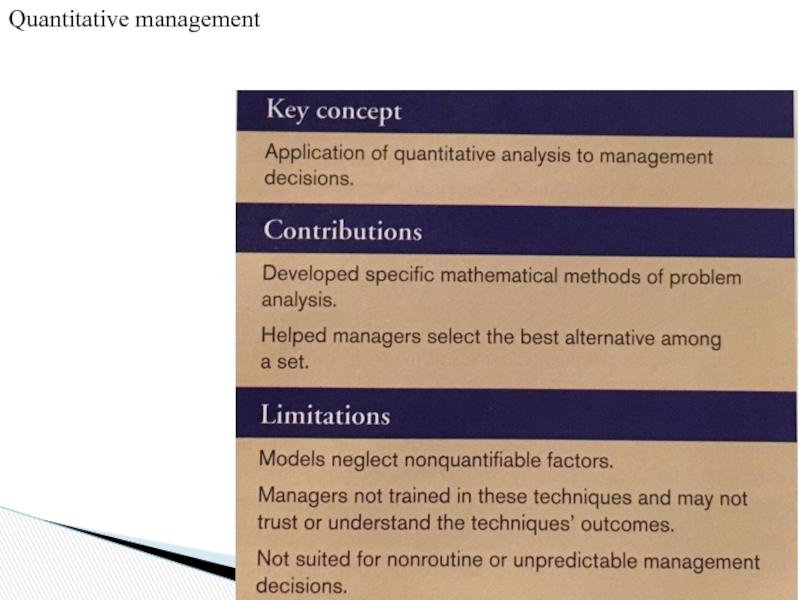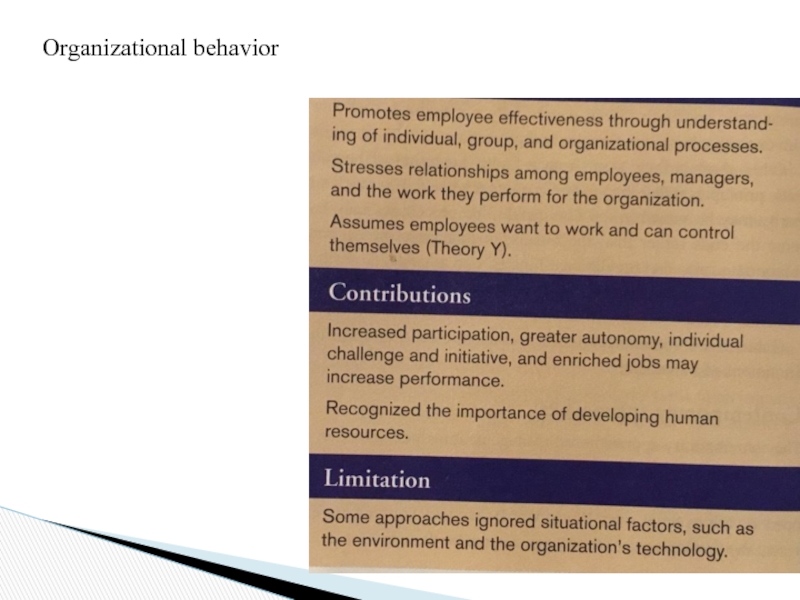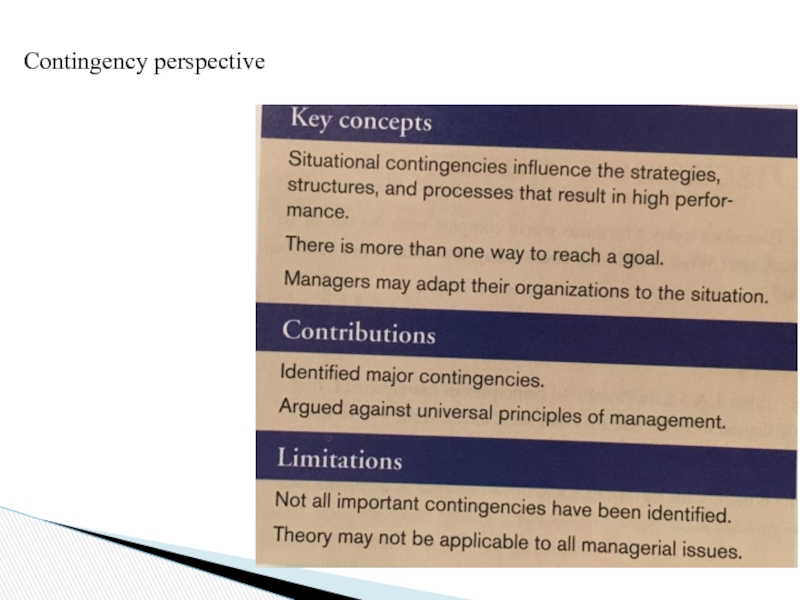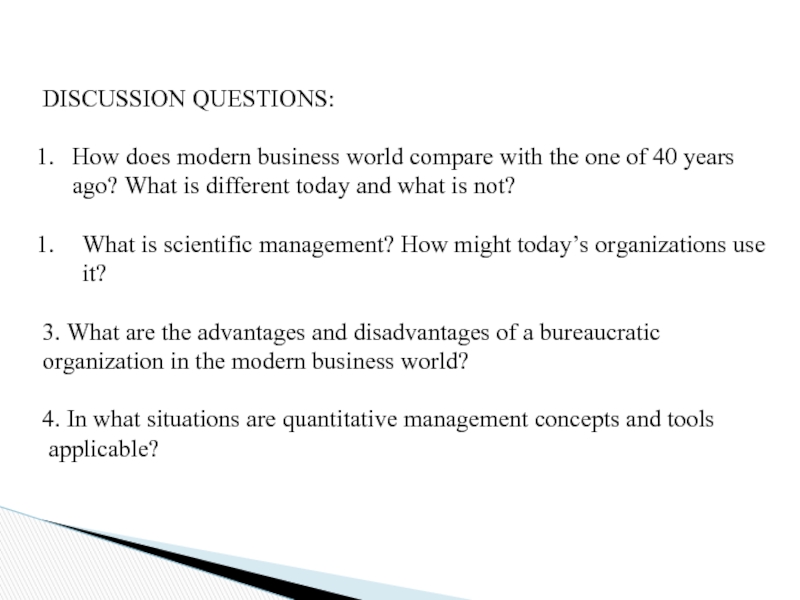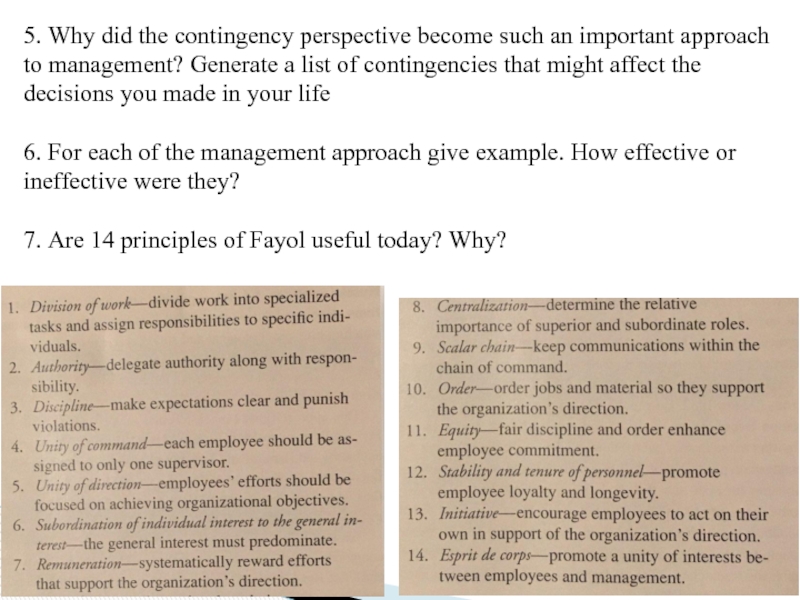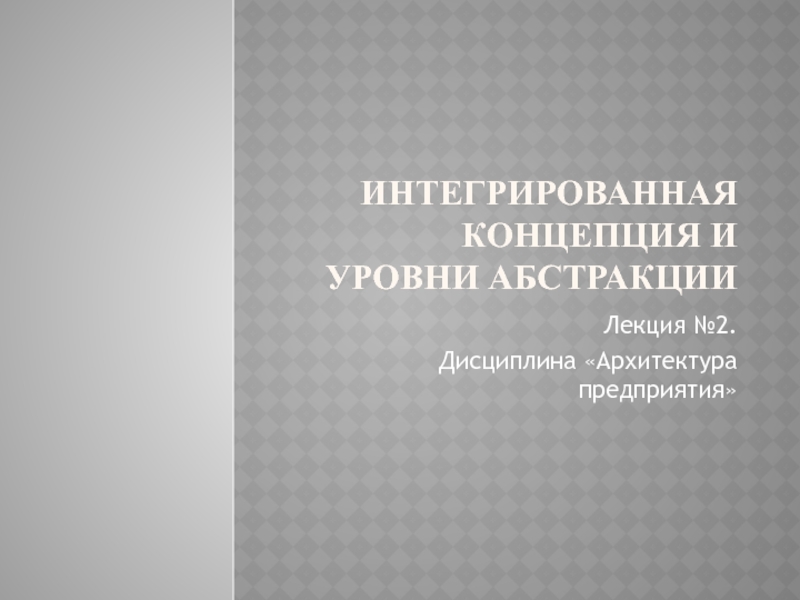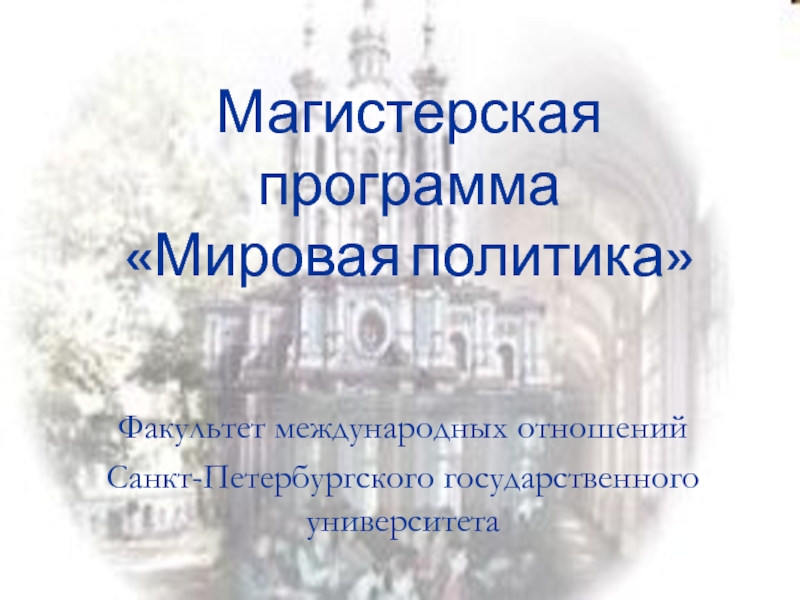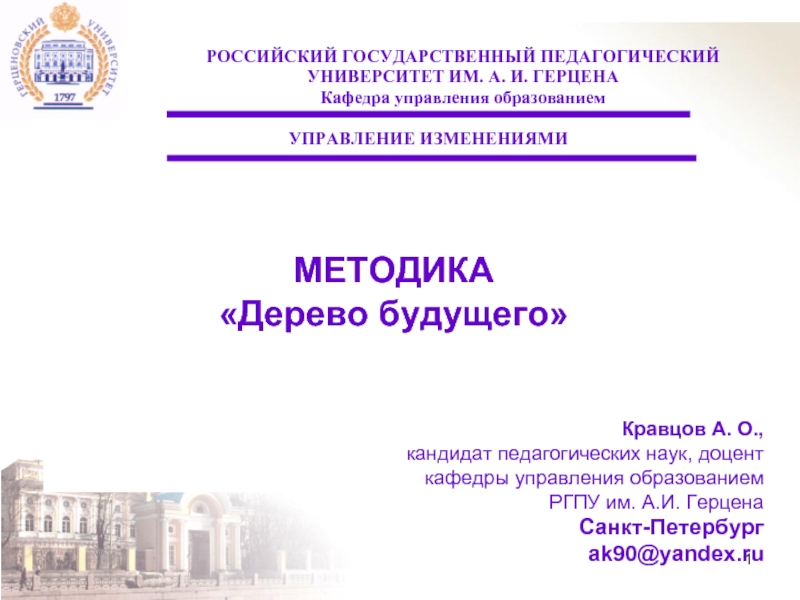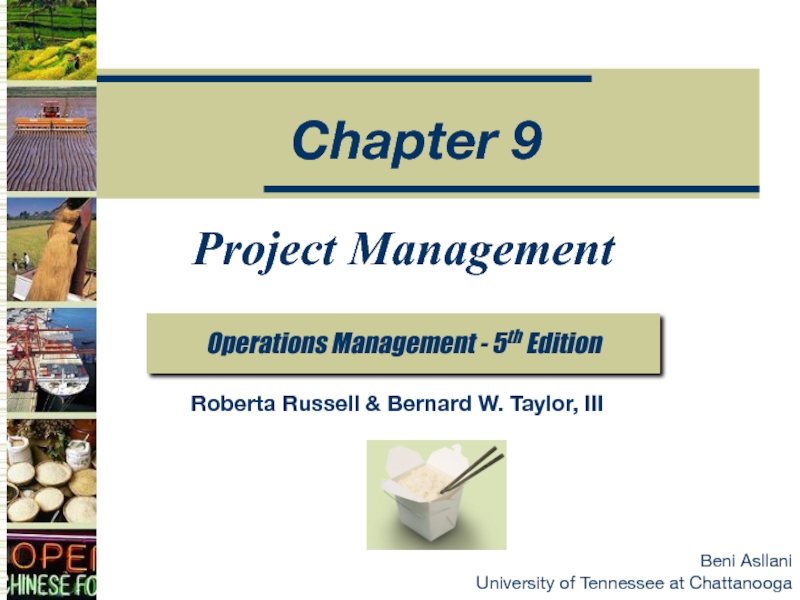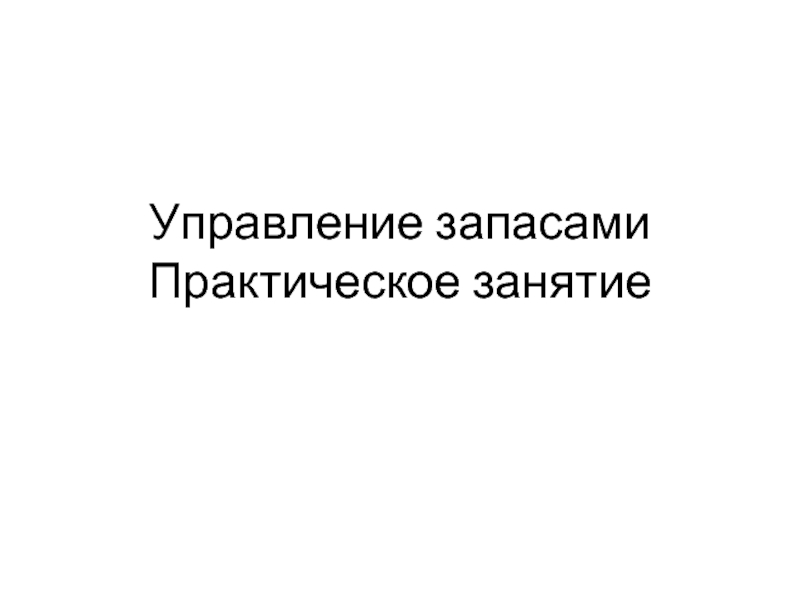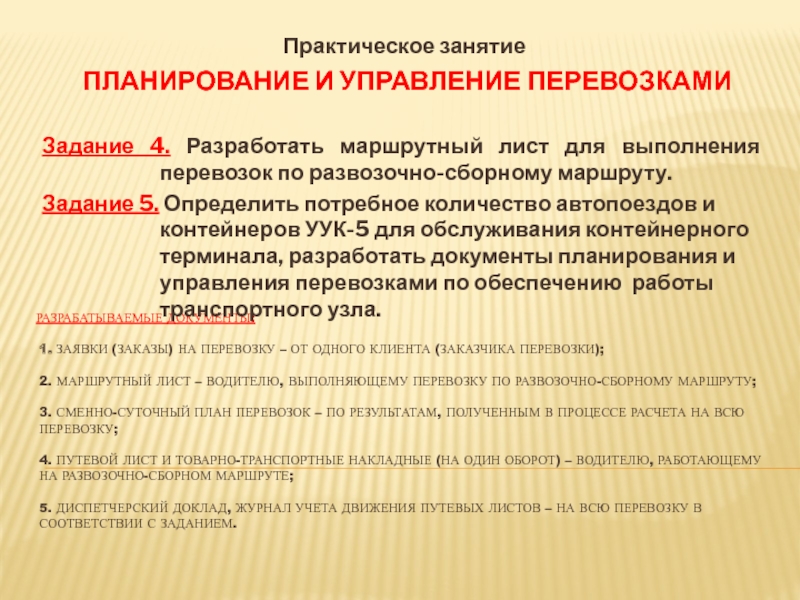- Главная
- Разное
- Дизайн
- Бизнес и предпринимательство
- Аналитика
- Образование
- Развлечения
- Красота и здоровье
- Финансы
- Государство
- Путешествия
- Спорт
- Недвижимость
- Армия
- Графика
- Культурология
- Еда и кулинария
- Лингвистика
- Английский язык
- Астрономия
- Алгебра
- Биология
- География
- Детские презентации
- Информатика
- История
- Литература
- Маркетинг
- Математика
- Медицина
- Менеджмент
- Музыка
- МХК
- Немецкий язык
- ОБЖ
- Обществознание
- Окружающий мир
- Педагогика
- Русский язык
- Технология
- Физика
- Философия
- Химия
- Шаблоны, картинки для презентаций
- Экология
- Экономика
- Юриспруденция
Historical development of management (Lecture 2) презентация
Содержание
- 1. Historical development of management (Lecture 2)
- 2. Management as practice appeared because of the
- 3. Adam Smith pointed that the natural desire
- 4. The formation of management as a science
- 5. The evaluation of management thought
- 6. Scientists (founders of management): Frederick Taylor
- 7. Classical approaches: Systematic Scientific
- 8. Systematic approach Systematic approach tried to
- 9. Systematic approach
- 10. Administrative -classical school of managers
- 11. Administrative -classical school of managers The
- 12. 14 principles of administration: Administrative -classical school of managers
- 13. 1 Division of work 2 Power
- 14. Henri Fayol points the operation groups in management:
- 15. The contribution of this school is that
- 16. School of Scientific management F.Taylor is
- 17. Taylor's basic views presented in the books
- 18. The merit of Taylor’s works: 1
- 19. The merit of Taylor’s works for
- 20. The main idea is that based on
- 21. Fundamental principles of management (Emerson G):
- 22. Human relations school G. Münsterberg (1983-1916)
- 23. In management the main accent is paid
- 24. The essence of human relations school points
- 25. Bureaucracy approach Max Weber – The Theory of Social and Economic Organization
- 26. Contemporary approaches include: Quantitative management
- 27. Quantitative management
- 28. Organizational behavior
- 29. Contingency perspective
- 30. DISCUSSION QUESTIONS: How does modern business
- 31. 5. Why did the contingency perspective become
- 32. THANK YOU FOR YOUR ATTENTION
Слайд 2Management as practice appeared because of the understanding that:
to achieve the
Слайд 3Adam Smith pointed that the natural desire to increase wealth is
Слайд 4The formation of management as a science
is determined by
needs and demands
the scientific working outs of the most effective methods to fulfill the work
Слайд 6Scientists (founders of management):
Frederick Taylor (1856-1915);
Harrington Emerson (1853-1931);
Henri Fayol (1841-1925)
Слайд 8Systematic approach
Systematic approach tried to build specific procedures and process
It emphasized economical operations, adequate staffing, maintenance of inventories to meet consumer demand, and organizational control
It was done through:
Careful definition of duties and responsibilities
Standardized techniques for performing the duties
Specific means of gathering, handling, transmitting and analyzing information
Слайд 10Administrative -classical school of managers
Henri Fayol (1841 - 1825) created a
Followers:
H.Emerson, L.Guleek, A.Railly, Ch.Bernard worked on the creation of general (universal) principles of management
Слайд 11Administrative -classical school of managers
The working out the rational structure
Human management
Division of the company to departments and semi-departments
Bureaucratic system of management based on clearly defined rules of duties and obligations
Scientific directions
Слайд 131 Division of work
2 Power and responsibility
3 Discipline
4
5 Unity of leadership
6 Submission of private interests to company ones
7 Remuneration of staff
14 principles of administration:
8. Centralization
9 Scalar objective
10 Procedure
11 Justice
12 Permanence, stability of staff
13 Initiative
14 Corporate spiritual union staff
Administrative -classical school of managers
Слайд 14Henri Fayol points the operation groups in management:
Technical
Commercial
Financial
Insurance
Accounts
Administrative
Administrative -classical school of managers
Слайд 15The contribution of this school is that management is considered as
They formed the theory of management of the entire organization.
Administrative -classical school of managers
Слайд 16School of Scientific management
F.Taylor is a founder of this school.
His
Fair daily output shouldn’t depend on subjective evaluations of manager but it should be based on detailed scientific observation and inspection.
It leads to the appearing of scientific management.
Слайд 17Taylor's basic views presented in the books "Enterprise Management" (1903),
"Principles
The basic ideas of the works:
1 role of managers
2 motivation and rewards
3 rationing of work
Слайд 18The merit of Taylor’s works:
1 He proved the possibility to develop
2 Each manager must provide selection, choose the most suitable working places with maximum benefit, motivation and control of work.
3 He improved the system of remuneration.
Слайд 19The merit of Taylor’s works for
establishing the principles of scientific
4. The investigation of each individual activity
5. The selection of works to perform certain operations and training
6. Providing employees with the necessary resources
7. Extracting planning as a separate process control
8. Adoption of management as a separate activity
Слайд 20The main idea is that based on observation, logic, analyses a
The subject of the research is the production process
The object – the employee
School of Scientific management
Слайд 21Fundamental principles of management
(Emerson G):
The main task of employee to
The main task of a chief to make the employee's work more effective
Qualified specialists are to form the tasks of the activity
Higher management level is to serve the lower one
School of Scientific management
Слайд 22Human relations school
G. Münsterberg (1983-1916)
M L.Falletta (1868-1933)
Elite Mayo
D. McGregor (1906-1964)
Neoclassical school – beginning of 20th century
The human factor as the main element of an effective enterprise
Слайд 23In management the main accent is paid not to fulfilling the
Relationship between people is the main distinguishing feature of the school of human relations
Human relations school
Слайд 24The essence of human relations school points the managerial precepts developed
1 Pay attention to the opinions of others, even if it is not true. Please infinite patience.
2 Justice for subordinates.
3 Be polite, do not show irritation.
4 Being short.
5 Discuss the subordinate’s mistakes privately .
6 Thank for the good work.
Human relations school
Слайд 26Contemporary approaches include:
Quantitative management
Organizational behavior
Systems theory
Contingency
Слайд 30DISCUSSION QUESTIONS:
How does modern business world compare with the one of
What is scientific management? How might today’s organizations use it?
3. What are the advantages and disadvantages of a bureaucratic
organization in the modern business world?
4. In what situations are quantitative management concepts and tools
applicable?
Слайд 315. Why did the contingency perspective become such an important approach
6. For each of the management approach give example. How effective or ineffective were they?
7. Are 14 principles of Fayol useful today? Why?
